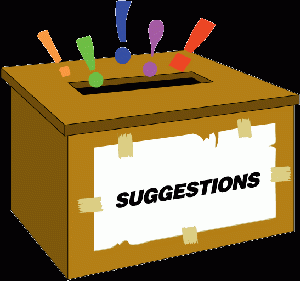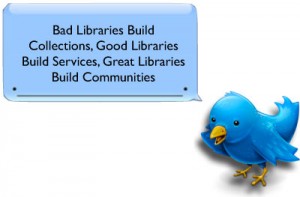As I studied through Theme Two, I found the study was quite straight forward as the tasks of a teacher-librarian (TL) were clearly laid out with guidelines.
One of the many tasks of a TL is to conduct reference interview in order to gain insight of the learning community better. The teacher-librarian should invest time into building relationship with the patrons (students and staffs) and focus on their needs. The information gathered through reference interviews should be considered when selecting new reference materials.
Another task of a TL is to manage the reference collection. The Surrey School District (SD 36) provides the teacher-librarians with guidelines in selecting and evaluating reference materials in the district’s Teacher-Librarian Handbook. Riedling, Marlow, & Shake (2013) have discussed in detail in evaluating different formats of reference resources. Bishop (2007) listed the advantages and disadvantages of different formats of reference materials, as well as discussions in the selection criteria, implication of collection development and copyright considerations for each format. Since the TL is acquaintance with the needs of the learning community, the management of the reference collection would become a less challenging task.
Regular evaluations of the reference service are required to improve the service. Lamb & Johnson suggested that library collection could be evaluated through the mapping of collection, along with the circulation statistics. Surveying the patrons could help the TL in evaluating the physical collection as well as the service provided by the TL. I think it is important that a TL should have an open-mind and willingness in accepting any suggestions and opinion, criticism or complementaries on the collection as well as the service. Placing a suggestion box on the library counter would encourage students and staffs to provide suggestions.
Photo courtesy of http://www.mindsatwork.com.au/creativity-2/the-suggestion-box/
The 21st Century Learning Commons and Reference “Collection”
In this 21st century, the libraries, including school and public libraries, are gradually changing into learning commons. There is no question that the roles of the TL change accordingly. As the learning community focuses on inquiry-based learning, the TL is expected to work collaboratively with teachers and students. Besides being the manager of the library collection, the TL is expected to be educational leader whose goal is to build a collaborative learning community. As I browse through the web in search for image to be included in this blog post, I came across this image:
Photo courtesy of http://quartz.syr.edu/blog/?p=1600
We had been discussing about building collections and providing services, however, what make a 21st century library great is that it provides a platform to building a learning community. The above image lead me to a blog post titled with the quotes in the photo above, composed by R. David Lankes. In the blog post, Lankes stated:
“So, do good, bad, great, and ugly libraries have collections? Yes. But great libraries realize that the collection is not what sits on the stacks, but the members and their worlds. The focus is on connection development, not collection development.”
Moreover, in the same blog post, Lankes further discuss the kind of collection that a school librarian should have:
“…great school librarians have a collections of lessons they teach, student teams that assist teachers with technology, and collections of good pedagogy.”
I definitely could resonate to those statements. Please do not misunderstand. The statements do not mean that we should throw out the physical reference collection in the library, but to shift our focus from the physical to relational. The video below, which I discovered on YouTube, shows how a public librarian went over and beyond in bringing resources to build a learning community. I had learned inspirational ideas from the presenter, Pam, such as bringing in live animals and providing reference books on the animals to encourage inquiry learning. Hope that Pam’s sharing could inspire you as well.
References:
Asselin, M., Branch, J., & Oberg, D., (Eds). Achieving information literacy: Standards for school library programs in Canada. Ottawa, ON: Canadian School Library Association & The Association for Teacher-Librarianship in Canada.
Bishop, Kay. The Collection Program in Schools: Concepts, Practices, and Information Sources. 4th ed. Westport: Libraries Unlimited, 2007. Print.
Lamb, Annette, and Larry Johnson. “Management: Collection Evaluation.” Multimedia Seeds: Audio and Video Collections in Schools and Libraries. Web. 16 Feb. 2016. <http://eduscapes.com/seeds/management/cd4.html>
Lankes, R. David. “Beyond the Bullet Points: Bad Libraries Build Collections, Good Libraries Build Services, Great Libraries Build Communities.” Web log post. R. David Lankes. 11 Mar. 2012. Web. 19 Feb. 2016.
Link: http://quartz.syr.edu/blog/?p=1411
Riedling, Ann Marlow, Loretta Shake, and Cynthia Houston. Reference Skills for the School Librarian: Tools and Tips. Third ed. Linworth, 2013. Print.
School District No. 36 (Surrey) Teacher-Librarian Handbook. Surrey School District, 2007. Print.



A very well done reflection on the theme 2 main ideas. You’ve identified and highlighted many of the key takeaways and major lessons of the theme, coupled with strong references and resources that support your ideas. You’ve collected a few interesting multi-media resources as well to help explore and explain some of these new models and practices. A good look back at theme 2, with your learning and plans to take forward discussed well and supported with good evidence.